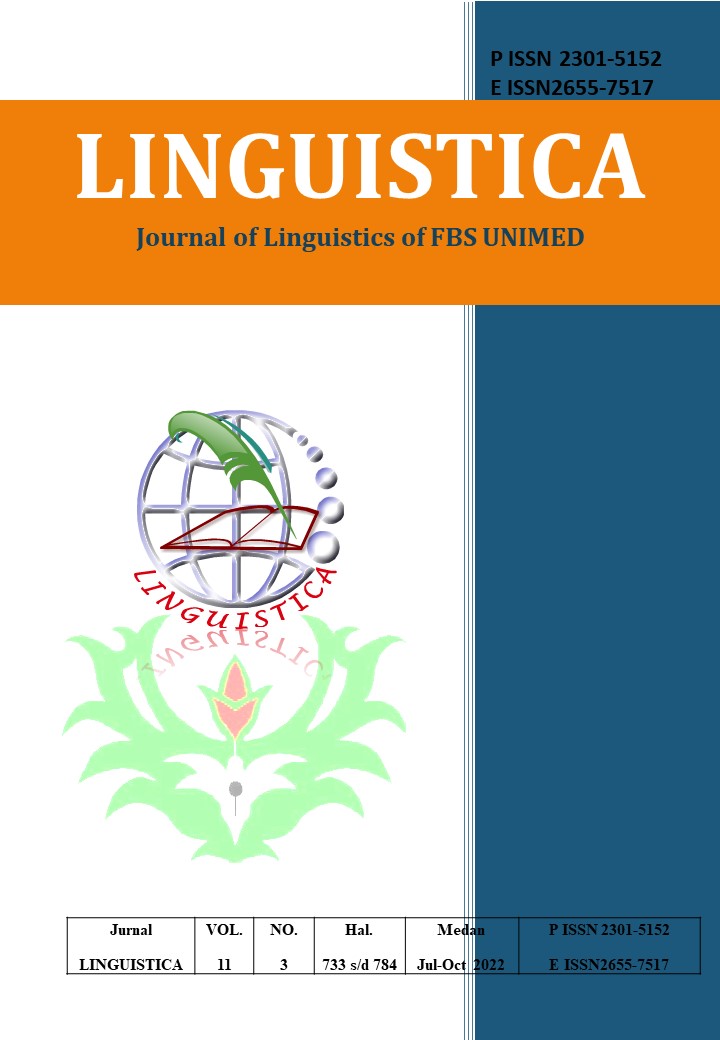REPRESENTATION OF RACIAL DISCRIMINATION IN KASI LEMMONS™S HARRIET
DOI:
https://doi.org/10.24114/jalu.v11i3.39600Abstract
In this social conditions, it is undeniable that cases of discrimination still dominate actions that are still widely felt by individuals, or groups of people. This discriminatory attitude is still often found in social, cultural, school and work life. This study aimed at identifying the kinds of racial discrimination in Illustration and dialog of script and movie biographies about Harriet Tubman and what are Nigger's resistance toward those discriminations in the movie. This study was conducted by applying descriptive qualitative method. The sources of data were taken from the script. The research instrument was the researcher herself by using a tool including laptop and books. The results of this research showed that in Harriet movie, there were five types of discrimination with the total of verbal antagonist (37,037%), avocation (18,518%), segregation (37,037%), physical attack (7,4071%). Racial discrimination is a belief or doctrine that inherent differences among the various human races determine cultural or individual achievement, and finally discrimination found as the most dominant thing that the depict racism in the movie.Downloads
Published
2022-11-01
Issue
Section
Articles
License
Copyright (c) 2022 ANGGI VERONIKA SIMANJORANG, SYAMSUL BAHRI

This work is licensed under a Creative Commons Attribution-ShareAlike 4.0 International License.
Authors who publish with this journal agree to the following terms:
- Authors retain copyright and grant the journal the right of first publication with the work simultaneously licensed under a Creative Commons Attribution License that allows others to share the work with an acknowledgment of the work's authorship and initial publication in this journal.
- Authors are able to enter into separate, additional contractual arrangements for the non-exclusive distribution of the journal's published version of the work (e.g., post it to an institutional repository or publish it in a book), with an acknowledgment of its initial publication in this journal.
- Authors are permitted and encouraged to post their work online (e.g., in institutional repositories or on their website) prior to and during the submission process, as it can lead to productive exchanges, as well as earlier and greater citation of published work (See The Effect of Open Access).
- This work is licensed under a Creative Commons Attribution-ShareAlike 4.0 International License.

